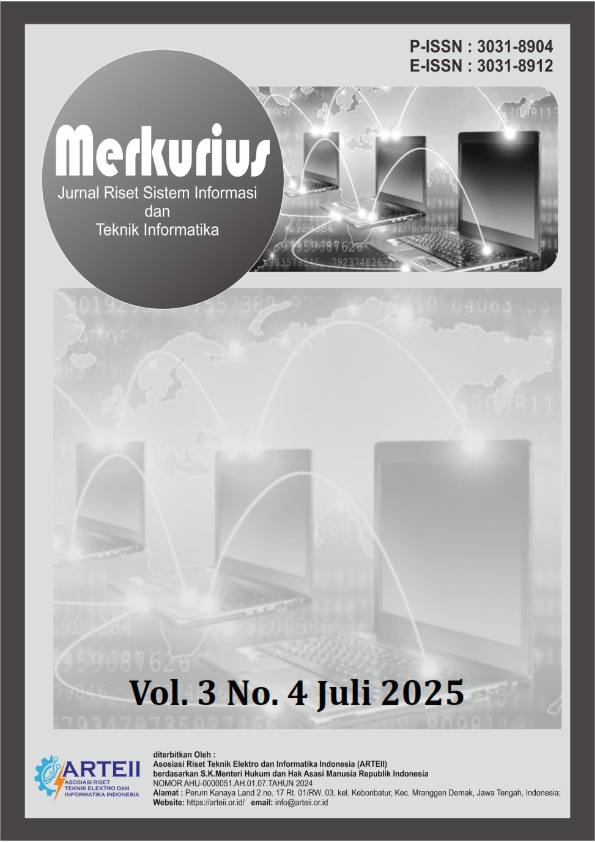Technology Acceptance Model untuk Mengukur Persepsi Kemudahan dan Kegunaan Zahir Accounting dalam Menyusun Laporan Keuangan
DOI:
https://doi.org/10.61132/merkurius.v3i4.811Keywords:
Perceived Ease of Use, Perceived Usefulness, Technology Acceptance Model, Zahir AccountingAbstract
Current technological developments encourage companies to also use technology so that their employees can work more efficiently. That is why the Zahir Accounting application is used to help PT Nikko Utama in preparing financial reports. This study aims to measure the level of satisfaction in using the Zahir Accounting application. This study uses the Technology Acceptance Model (TAM) method to measure the satisfaction of Zahir Accounting application users. By distributing questionnaires to 30 respondents, in this study based on 4 (four) independent variables (Perceived Ease of Use, Perceived Usefulness, Attitude Toward Using, and Actual Usage) it can be explained that user satisfaction in using the Zahir Accounting application is 84.1%, so it can be said that users feel satisfied and find it easy to use the Zahir Accounting application.
References
Accounting, Z. (2013, Februari 25). Zahir accounting. Diakses Mei 28, 2025, dari https://zahiraccounting.com/en/10-pertanyaan-terpopuler-sebelum-menggunakan-zahir-accounting/
Arifin, M., & Arifin, M. (2017). Perancangan sistem informasi pusat karir sebagai upaya meningkatkan relevansi antara lulusan dengan dunia kerja menggunakan UML. IC-Tech, 42–49.
Dany, Y. K., & Krisna, S. G. (2022). Technology acceptance model untuk mengukur kepuasan pelanggan dalam menggunakan website Hijab.id. Jurnal Informatika dan Komputasi, 26–35.
Davis, F. D. (1989). Perceived usefulness, perceived ease of use, and user acceptance of information technology. Journal of Storage, 13(3), 319–340.
Gunawan, S. (2017). Analisa kepuasan pengguna terhadap implementasi sistem enterprise resource planning menggunakan metode Technology Acceptance Model (TAM). Jurnal Informatika dan Komputasi, 10(2), 113–119.
Gunawan, S., & Hidayat, S. (2023). Metode TAM untuk analisa kepuasan pengguna tax application. Jurnal Informatika dan Komputasi, 17(2), 81–88.
Gunawan, S., & Yuliana, M. (2019). Persepsi kegunaan dan kemudahan pengguna aplikasi pendataan dasawisma dengan metode TAM. Jurnal Informatika dan Komputasi, 13(1), 32–35.
Hermanto, S. B. (2017). Determinan penggunaan aktual perangkat lunak akuntansi pendekatan Technology Acceptance Model. Jurnal Akuntansi dan Keuangan, 19(2), 67–81.
Ismail, L. C. G. (2022). Implementasi proses EDM03 dan APO12 pada framework COBIT 2019 dalam mengevaluasi tata kelola dan manajemen risiko teknologi informasi. Jurnal Teknologi Informasi dan Komputasi, 7(2), 55–63.
Lundberg, E. (2017, Mei 30). Customer satisfaction and loyalty in a digital environment: A quantitative study of e-commerce. Diakses Juni 28, 2025, dari https://www.diva-portal.org/smash/get/diva2:1111218/FULLTEXT01.pdf
Mahardhika, A. S. (2019). Akuntan di era digital: Pendekatan TAM (Technology Acceptance Model) pada software berbasis akuntansi. Jurnal Ilmiah Akuntansi, 8(1), 12–16.
Maliki, I. (2022). Integrasi teknologi dan operasional dalam sistem informasi pendidikan. Jurnal Sistem Informasi dan Teknologi, 11(1), 45–53.
Putri, P. H., & Perdana, A. (2021). Analisis penggunaan Zahir Accounting. SAKI, 4(2), 178–205.
Setiawati, A. P. (2023). Analisis pengaruh faktor perceived usefulness, ease of use dan sikap terhadap niat penggunaan software Zahir Accounting. Yos Soedarso Economic Journal, 5(3), 10–20.
Setiyani, L. (2021). Desain sistem: Use case diagram. E-Journal Rosma, 246–260. https://e-journal.rosma.ac.id/
Downloads
Published
How to Cite
Issue
Section
License
Copyright (c) 2025 Merkurius : Jurnal Riset Sistem Informasi dan Teknik Informatika

This work is licensed under a Creative Commons Attribution-ShareAlike 4.0 International License.





